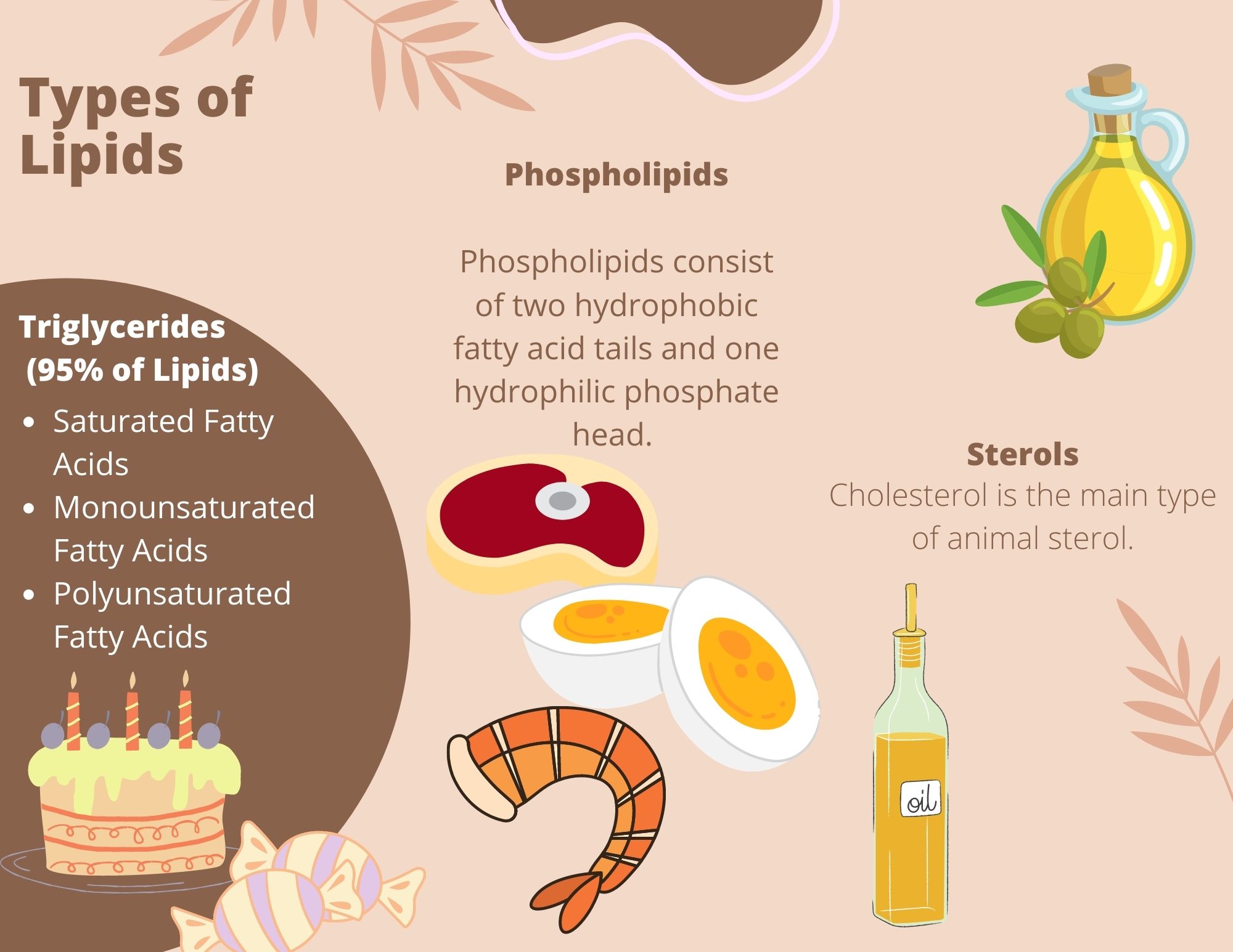Introduction
Lipids are important molecules that serve different roles in the human body. The word lipid and fat are often used interchangeably, however, lipid is the umbrella term for this category of organic compounds that are mostly insoluble in water. Fat, along with oils, steroids, and waxes fall under the definition of lipids and are included in the lipid macronutrient group. The most common type of lipid is a specific type of fat that we get from food called a triglyceride, which we will discuss more thoroughly later in this chapter. When people refer to “fat” they are usually referring to triglycerides. Dietary fat is a highly concentrated source of energy and with more than 9 kcals/gram, contains more than twice as much energy as carbohydrate and protein.
A common misconception is that fat is simply fattening. However, fat is probably the reason we are all here. Throughout history, there have been many instances when food was scarce. Our ability to store excess caloric energy as fat for future usage allowed us to continue as a species during these times of famine. So, normal fat reserves are a signal that metabolic processes are efficient and a person is healthy. Lipids perform several important functions within the body:
- Provide energy
- Primary form of energy storage in the body
- Insulate from temperature fluctuations
- Protect organs
- Aid in the absorption and transport of fat-soluble vitamins
- Vitamin D production
- Hormone production
- Make up the structural components of cell membranes,
- Important signaling molecules.
There are three major categories of lipid; triglycerides, phospholipids, and sterols. Later in this chapter, we will examine each of these lipids in more detail and discover how their different structures function to keep your body working.
Figure 6.1 Categories of Lipids

Chapter Attributions
This Open Educational Resource textbook has been adapted from:
- OpenStax Anatomy and Physiology // CC BY 4.0
- Lumen Learning Nutrition // CC BY 4.0
- Human Nutrition // CC BY NC SA
- Lumen Learning Introduction to Chemistry // CC BY SA
Media Attributions
- Types of Lipids © Natalie Fox is licensed under a CC BY (Attribution) license
